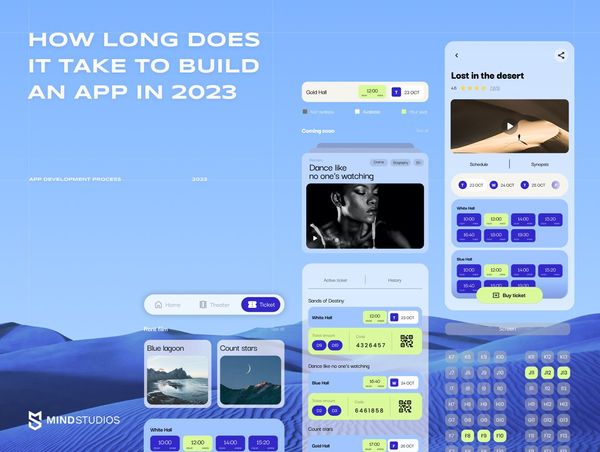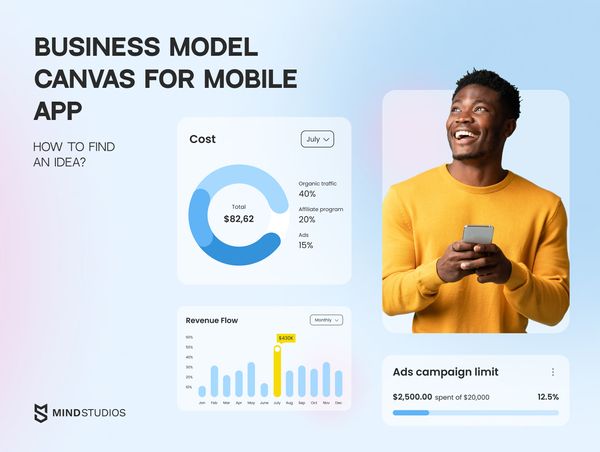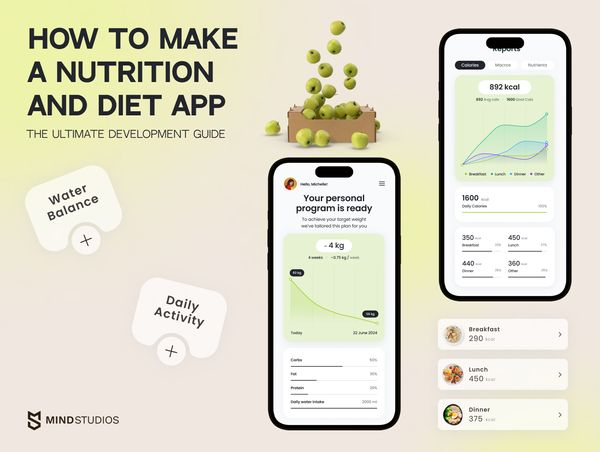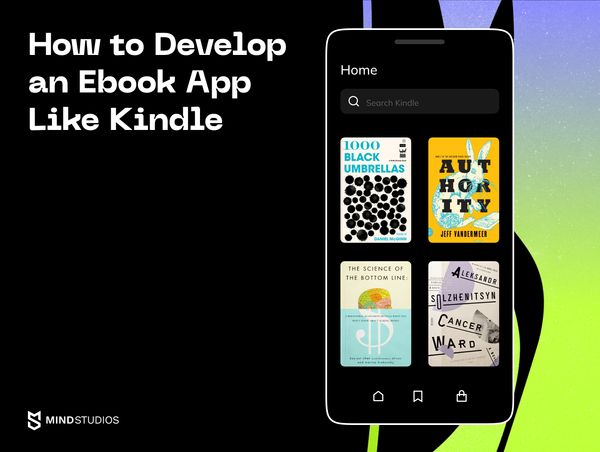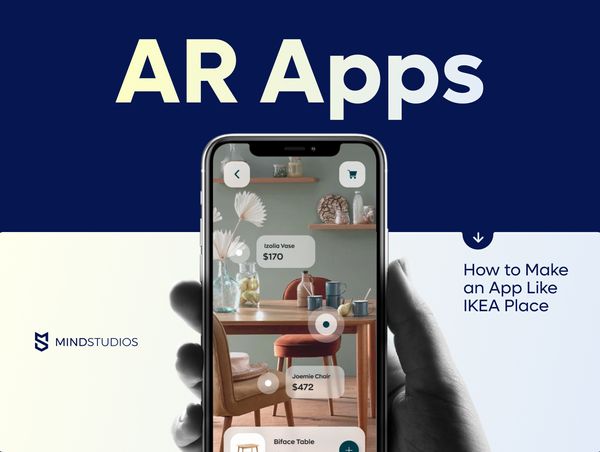
Developers at Mind Studios are an experienced bunch but we’re constantly striving to work better, faster, and learn as many emerging technologies as possible. Naturally, our people are hyped over things like VR and AR. Which is why in this article, we venture into the hot topic of augmented reality apps and specifically AR home shopping app development on the example of IKEA Place, the pioneer in the niche.
Mobile Augmented Reality (AR) Market Size
Since the launch of Pokémon Go in 2016, augmented reality has been the talk of the mobile IT industry. Years later, it’s not limited to gaming but is part of a wide range of apps in a selection of business niches.
In 2020, the global market for mobile apps with augmented reality reached $12.59 billion. The same report that mentioned that data also stated that the compound annual growth rate for the industry in 2021–2027 will be around 31.38%.
AR today is part of multiple industries besides gaming. Medical and military industries, for example, are at the forefront of using VR and AR in educating their personnel. Education in general makes use of AR quite a bit. But more niches can benefit from implementing AR into their arsenals.
Home decor businesses are among those that can profit from an AR-supporting mobile app, as proven by IKEA Place: the app, developed to provide the whooping 98% accuracy when “placing” furniture in the apartment, brought the IKEA website engagement to new heights. There’s even research that proves that AR increases user engagement.
What is IKEA Place?

IKEA Place was released late in 2017, first only for iOS devices; the app came to Android about half a year later. Since that time, augmented reality has been used in a number of similar furniture selling apps.
The gist of the IKEA Place app is that users can virtually fit a piece of furniture in a room to see how it will look. It’s kind of like photoshopping it into the room but with more options, less hassle, and no collaging skills/software necessary. It’s possible to change an item’s color, save the resulting AR picture, and share it with friends and family to ask for opinions before making a purchase.
IKEA Place is a projection-based app; it’s able to estimate the size of a room so the 3D furniture models you see are exactly the right size relative to the room. This way, you’ll know right away if a piece fits and not only if it looks good with your wallpaper and carpet.
Who needs an AR furniture application?
Strictly speaking, if your business deals in furniture one way or the other, you can benefit from AR furniture app development. If your business is involved in:
- selling furniture
- designing furniture
- assembling furniture
You can use an AR-enabled app to engage your customers and market your services. The main purpose of AR in consumer-facing applications is exactly that — to engage, to add a bit of creativity to marketing and sales processes.
If you create an AR app like IKEA Place for your business with the help of an experienced team, it has all the potential to boost your sales manyfold.
Sounds perfect, right? If you own or partner with a business that sells furniture, a similar AR-enabled app could be a huge help.
So how can you make an app like IKEA Place? The following is an in-depth look at the features to implement and technologies to use.
Features necessary for an app like IKEA Place

The first thing to keep in mind when developing a marketplace — any marketplace, not just an AR one — is that the user interface must be easy to understand and navigate. The more taps users need to get the item they want, the fewer users will complete the process, let alone come back to your app for another purchase or recommend it to friends. We can’t stress enough the importance of a clear and uncluttered interface.
Below are must-have features for any app like IKEA Place.
Sign-up/log-in
Strictly speaking, you can allow unregistered users to use the app, especially if the app won’t have buying functionality and will redirect users to your website for purchases. By allowing purchase via website only you will be able to avoid app store fees on in-app purchases. However, making it possible for users to register and create profiles will allow you to expand functionality by personalized features like favorites, for example.
The best option for sign-up and log-in is to offer registration via social networks. It’s quick, requires minimum taps/clicks, and automatically connects your app to a user’s social network accounts for sharing screenshots (more about those later).
Catalog
IKEA has a separate IKEA Catalogue app that was a sort of testing ground for AR functionality before IKEA Place was developed. But its main purpose is basically in its name, and it doesn’t necessarily require a separate app. Your catalog is where users can browse the items you offer and try them out with augmented reality furniture placement.
The catalog should be divided into categories for a better user experience. You can categorize items by type (chairs, desks, beds) or by intended placement (living room, kitchen, bedroom). Or you can combine these categorizations.
If you’re not going to include an augmented reality feature for all the furniture you sell — or if you’re planning to add AR items gradually — you might need a separate catalog that only offers photos. Or you can keep everything in a single catalog but add a tag to AR-enabled items.
Search functionality
Having a search functionality in an AR furniture app is a must, even if yours isn’t as big a business as IKEA. Browsing a whole category might take quite some time, and in case users want a specific item (say, from your printed catalog) they should be able to find it effortlessly.
Another aspect of search is filtering. Allow your customers to filter catalog items by:
- type
- dimensions
- price
- color
If you’re not the owner of a furniture business yourself but a retailer selling furniture from other companies, you should also add filtering by manufacturer, seller, and possibly country of origin.
Buying functionality
Your augmented reality furniture app absolutely needs some option for users to make purchases in one way or another. You can link to your store website, or you can integrate a payment gateway for faster and smoother transactions from within the mobile application. Just remember to choose a service with clear and understandable policies and mind the fees.
User profiles and dashboard
Everything the user does in the app is recorded in their profile: viewed items, followed categories, favorites, order history, and their cart (if you’re integrating buying functionality). Credit card numbers and delivery addresses are sensitive information, so if you’re going to allow users to save them in the app, you need to take great care and implement high-end data security certificates.
Dimension scanning

Now we’ve come to the heart of the matter. What makes the IKEA furniture placement app so good is its ability to correctly gauge a room’s dimensions and the amount of free space using only a smartphone camera. Without this functionality, your app will be incomplete. Accurate dimension scanning is crucial in an app like IKEA Place.
Object manipulation
What distinguishes augmented reality from simply pasting items onto a photo of a room is that in AR, you can turn the object this way and that, looking at it from all sides. If you’ve ever played The Sims, you know what we’re talking about. In AR apps, photographs of furniture aren’t just imported into the app. 3D models are created of each item in accordance with its real-life size, making it possible to rotate furniture to place it right.
Push notifications
Push notifications are handy in any retail app. They can be used to send customers news about new products, old products that are back in stock, discounts, sales, and more.
Extra features for AR furniture shopping app development
These features might bear slightly less importance for the proper functioning of your augmented reality furniture app. Still, any and all of them will surely enhance the convenience and joy of using your app.
IKEA Place already has these features, so they aren’t totally new or unique. If your business isn’t in direct competition with IKEA, one of these features might be your app’s unique value proposition (UVP). If IKEA has a huge presence in your niche, you’ll need a different UVP to stand out.
When you’re working with an outsourcing AR app development company, a project manager will help you find a UVP and implement it.
Without further ado, let’s see what these features can be.
Favorites
Buying furniture isn’t something most people do on a whim. The decision can take days of browsing and comparing. That’s why it’s a big perk for an augmented reality furniture app to allow users to save items that catch their eye to return to them later.
Screenshots and easy sharing
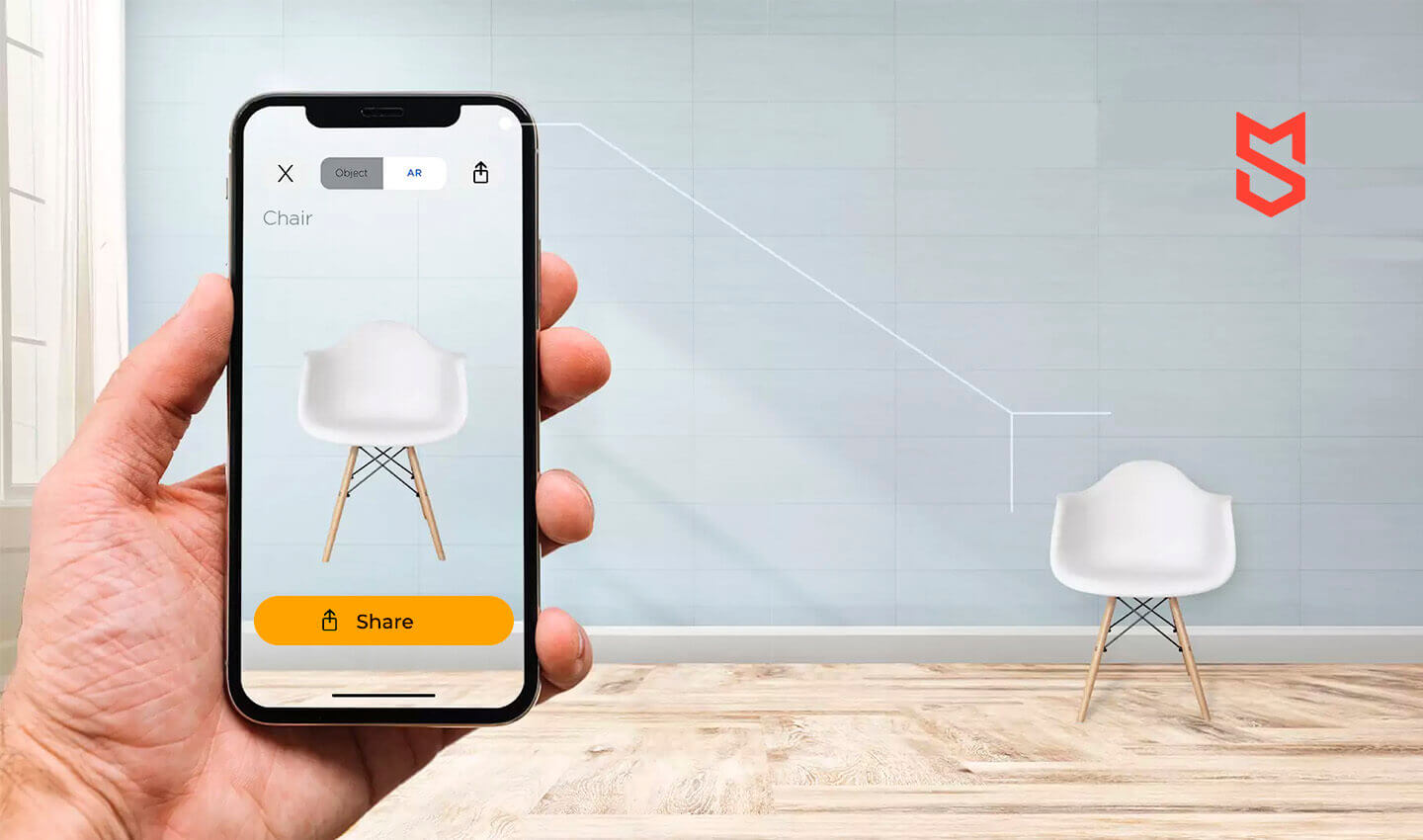
One of the most popular features of the IKEA augmented reality app is the option to capture an image of a room with virtual furniture in it and share it with friends. Whether users share via email, Facebook, or Twitter or merely save a screenshot to check it out later, the option to keep an image is appreciated. For starters, it helps customers compare different items. And it’s just cool.
Reviews
The trust people place in reviews is staggering: up to 95% of customers check out reviews online before making a purchase. By allowing customers to leave reviews within your app, you make it easier for them. When buyers can leave a review in-app right away instead of going to your website, they’ll leave reviews gladly. You can also implement instant duplicating of reviews from the app to your website and vice versa. This can boost the popularity of your app.
Support for multiple languages
Even if your business operates in a single country or even city, chances are that your users won’t all speak the same language. To better cover the target audience of your virtual furniture app, a multi-language interface is important. Localization can be postponed to when your app gains traction and more users, but we advise you to keep it in your business plan.
Delivery tracking
When your customers make a purchase through your app, they want to know how long it will take for the furniture to arrive. You can either send email notifications at each stage of delivery or you can let your customers check the delivery status on a separate screen within the app. Push notifications can also be used to notify buyers when the delivery status changes.
This list isn’t complete; it’s just some basic features to help you know where to start with developing an augmented reality app for a furniture business. Chatbots, loyalty programs, and analytics are also features worthy of consideration. As you work with your augmented reality app developers, you’ll come up with more features based on their knowledge and experience.
What you’ll need to create your own AR app like IKEA Place
Augmented reality apps pose some challenges that set them apart from most other apps. Implementing AR is no easy task, and it’s also not the cheapest endeavor. However, with the leaps in technology we’re seeing today, investing both time and money into such a project has all the chances of paying off nicely.
Take a look at some of the requirements to build your own AR app for furniture.
3D furniture models

In theory, it’s possible to use thoroughly edited photos of items, but in practice, that’s not a good idea: unlike 3D models, photos can’t be manipulated much. With photos, users won’t be able to turn furniture around to see how it looks from all sides and in any part of the room.
3D models can be scaled effortlessly, which is essential for placing furniture in a room (there’s perspective, after all). 3D models can also be turned 360 degrees since they’re not flat like photos.
Hence, you’ll need a 3D model designer to create realistic models of your furniture. It can be done via photogrammetry or by building from blocks. The bigger your catalog, the better, and it’s always a good practice for a business to expand its product list. We recommend rendering your whole inventory in 3D for your augmented reality app. And though it’s not cheap, it’s also a sensible decision to keep in touch with 3D designers to add new models when you add new items to your catalog.
Augmented reality development tools
Without getting too techie, we’ll just say that developers of apps similar to the IKEA augmented reality app use a variety of software development kits (SDKs) to help them out. An SDK is basically everything one might need for software development, gathered together in a bundle.
For implementing AR features, Apple offers ARKit and Google offers ARCore. Generally speaking, if you’re aiming to make an AR shopping app for both Android and iOS, you’ll need both kits. But those aren’t your only options. One of the most popular SDKs for AR implementation is the WikiTude, since it supports a range of frameworks and platforms. There are other SDK providers on the market as well.
Some AR app developers use gaming engines like Unity if they’re experienced with them. Unity can be used for traditional apps as well as for games.
Tech stack for AR app development
In this section, we’ll round up some of the technologies we would use to develop an AR app for home shopping.
| Feature | Tech |
|---|---|
| iOS app | Swift |
| Android app | Kotlin, Java |
| Sign-up | Facebook API, Google API, Amazon SES | Search | Elastic Search |
| Payments | PayPal, Stripe |
| AR functionality | WikiTude SDK, ARKit (iOS), ARCore (Android), LiDAR, Unity 3D |
| Push notifications | Firebase SDK, APNs | Sharing | Facebook API, Twitter API |
| Delivery tracking | Google Maps API | Storage | Amazon S3, Google Cloud Storage |
| Backend | Ruby on Rails, Elixir/Phoenix, Node.js |
| Databases | MySQL, PostgreSQL, MongoDB |
| CDN | Cloudflare, OVH CDN | 3D modeling software | Blender, Maya, SketchUp, Unity 3D |
Cost to build an AR furniture app
When it comes to the cost of building a mobile application like IKEA Place, it’s hard to give even a rough estimate off the top of the head.
Your team to make an augmented reality app for home furnishing businesses should consist of:
- 1 project manager
- 1 UI/UX designer
- 1 Android developer
- 1 iOS developer
- 1 Unity developer (optional, for 3D modeling and AR implementation)
- 1 backend specialist
- 1 QA specialist
The AR home shopping app development process consists of multiple stages. If you’re interested in a breakdown, here it is.
| Stage | Time, h | Cost, USD |
|---|---|---|
| Project management | 220–320 | 9900–14,400 |
| Discovery | 80+ | 3600 |
| UI/UX design | 100–140 | 4500–6300 |
| Android development | 540–720 | 24,300–32,400 |
| iOS development | 520–700 | 23,400–31,500 |
| Backend development | 320–480 | 14,400–21,600 |
| Testing | 260–320 | 11,700–14,400 |
| TOTAL | 2040–2760 | 91,800–124,200 |
With a team like this, you might expect the cost to make an app like IKEA Place to start at $91,000. The price will vary depending on where your developers come from as well as how experienced they are with AR technology in particular.
Conclusion
AR is a young technology on mobile devices, and it’s still developing. This makes it both challenging and thrilling to implement. Augmented reality mobile apps aren’t that widespread yet, though they’re rapidly increasing in popularity. Now is the time to catch this trend. An AR virtual furniture app can be the edge your business is looking for.
We’ve tried to answer as many questions on this topic as we could. Our contact page is always open and waiting, hit us up with whatever else you want to know about how to make an augmented reality app like IKEA Place.


